Table of Contents
NADH (Nicotinamide Adenine Dinucleotide + Hydrogen, or coenzyme 1) is the active coenzyme form of Vitamin B3 (niacin). Every cell in your body contains NADH.
NADH is the primary carrier of electrons in the transfer of food from your diet into energy. This energy is stored as adenosine triphosphate (ATP). ATP is produced in your mitochondria and your main energy supply for each of your cells. Not enough NADH leads to ATP depletion, which can eventually lead to cell death.[i]
Studies have shown that supplementing with NADH improves cognitive function, enhances cellular energy, increases endurance, switches ‘off’ aging genes, and extends life span.
NADH helps:
- Protect brain cells. NADH repairs cell and DNA damage. And stimulates your immune system. NADH boosts the production of Nitric Oxide (NO) which relaxes blood vessels in your brain increasing cerebral blood flow. And NADH acts as an antioxidant helping to eliminate free radicals that can damage brain cells.[ii]
- Brain energy. NADH provides electrons for ATP synthesis in your mitochondria. Low levels of NADH result in brain fog, slow mental processing, and cognitive decline.
- Neurotransmitters. NADH affects cognitive function by stimulating the production of dopamine, norepinephrine and serotonin.[iii] These neurotransmitters are involved in learning and memory, cognition, recall and mood.
Overview
NADH (Nicotinamide Adenine Dinucleotide + Hydrogen) is the active coenzyme form of Vitamin B3 (niacin). Discovered early in the 1900’s, it’s also known as Coenzyme 1.
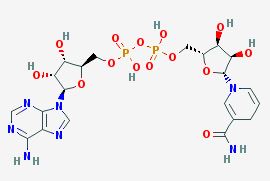
NADH is found in, and critical for the health of every cell in your body. NADH is the reduced form of NAD+(Nicotinamide Adenine Dinucleotide), making it the “active” form which can donate electrons.
NADH is the primary carrier of electrons from glucose and lactate for ATP synthesis. ATP is the cell fuel source produced within mitochondria. The power supply in each of your brain cells. So you need NADH to transfer the energy from the food you eat into a type of energy your body can use.
You get small amounts of NADH by eating meat, poultry and fish. Vegetables have very low concentrations of NADH. So vegetarians are typically low in NADH. And since NADH is very unstable, much of it is lost through cooking.
When you supplement with NADH, cerebral electrical activity increases in areas of your brain used for attention, cognition, focus, memory, concentration, and decision making.
How does NADH work in the brain?
NADH boosts brain health in several ways. But two in particular stand out.
- NADH increases the production ATP. NADH carries the electrons needed for the synthesis of ATP. Your brain cell mitochondria depend on NADH for ATP synthesis to function and stay healthy.
By providing the means for ATP synthesis, NADH is involved in cognition, focus, concentration, memory, and processing speed.[iv] And NADH plays an important role in mediating brain aging and tissue damage. Even decreasing the damage done by strokes.[v]
In one double-blind, placebo-controlled study researchers did a 3-month trial with Chronic Fatigue Syndrome patients. 86 patients were chosen to receive either 20 mg of NADH daily or a placebo for the first 2-months. Mean age of the participants was 47 years.
The study measured the intensity of fatigue, functional performance, mood state, functional impact of fatigue, quality of life, sleep quality, and exercise capacity. Each was measured prior to the study. And then at 30, 60 and 90 days of treatment.
The study found that oral administration of NADH resulted in decreased anxiety and maximum heart rate.[vi]
- NADH increases neurotransmitters. NADH is directly involved in the production of the critical neurotransmitters dopamine and norepinephrine.
Dopamine is usually made inside the neurons that use it. The amino acid tyrosine is first converted to L-DOPA through the enzyme tyrosine hydroxylase. L-DOPA is then converted to dopamine.
Research shows that tyrosine hydroxylase is the rate-limiting controller of dopamine synthesis. This is seen in Parkinson’s patients where tyrosine hydroxylase is much lower than in healthy people.
To complicate things even more, we need to understand what makes tyrosine hydroxylase work. The coenzyme that activates tyrosine hydroxylase is tetrahydrobiopterin (H4BP). And it’s NADH that activates this enzyme, and helps produce H4BP.
Researchers in Austria conducted an open label trial with 885 Parkinson’s patients. The study was conducted to try a therapy that might increase the brain’s own dopamine production instead of directly giving the patents L-DOPA.
In this study, 415 patients received intravenous (IV) NADH and 470 patients got an oral dose of NADH. Both groups showed overall good response to treatment including improvements in motor function, walking, pushing, posture and speech. They also experienced improvements in cognition and mood.
The researchers found increased dopamine metabolites in the urine of the patients. Indicating that NADH induced an increase in dopamine production. Most of the Parkinson’s patients were able to reduce and even eliminate their other Parkinson medications.[vii]
How things go bad
As we get older, NADH levels decline. And no amount of healthy eating or exercise can stop this decline.
↓ Dopamine and norepinephrine levels decline
↓ Intra-cellular genome communications break down
↓ Energy levels decline
All of these age-related changes are contributing factors to the neurodegenerative diseases of aging, including Alzheimer’s and Parkinson’s.
But even if things haven’t degenerated to such a debilitating level, NADH can help. In fact, it’s required for dopamine synthesis.
NADH benefits
Research has shown that people with low NADH levels are far more vulnerable to addiction, disease and other chronic conditions. Low NADH levels can happen at any age. Even at birth.
In our Western society, NADH is lost in cooking and food processing. And what little remains is broken down by stomach acid and degraded before it’s absorbed in your digestive tract.
When you take NADH as a supplement, your cells think oxygen levels are normal and start working as if they were younger, undamaged cells.
Research from hundreds of studies have shown that NADH will:
- Boost energy levels and stamina
- Reduce fatigue
- Reduce the possibility of age-related diseases
- Lower blood pressure
- Provide protection and energy to your brain
- Boost cerebral blood flow
How does NADH feel?
Using NADH as a nootropic can boost ATP synthesis in your brain. And increase the production of the neurotransmitters dopamine, norepinephrine and serotonin.
You should experience a boost in mental and physical energy levels, a better mood, improved cognition and alertness.
NADH even helps relieve symptoms related to jet lag. And has been shown to alleviate the symptoms of Chronic Fatigue Syndrome including less brain fog, improved mood and energy, and better cognition.
And neurohackers report more endurance during workouts and running.
NADH Clinical Research
NADH helps reduce Jet Lag
Current remedies for jet lag don’t work very well. Chronic commuters have resorted to melatonin, stimulants, sedatives and phototherapy. And all have produced dismal results in recovering from jet lag.
NASA investigated the efficacy of using NADH as a countermeasure for jet lag. NADH increases cellular production of ATP and facilitates dopamine synthesis. So the thinking was NADH could counteract the effects of jet lag on cognitive function and sleepiness.
35 healthy frequent travelers were recruited in this double-blind, placebo-controlled study. Testing was conducted on the West Coast before subjects flew overnight to the East Coast.
Subjects were given either 20 mg of sublingual NADH, or a placebo. All underwent testing to assess cognitive function, mood, and sleepiness in the morning and afternoon the day after the red-eye flight.
Jet lag resulted in sleepiness for half the participants, and a third of them experienced deterioration of cognitive function. The morning following the flight, subjects experienced lapses of attention, disruptions to working memory, divided attention and visual perceptual speed.
Those who received NADH performed significantly better on cognitive and motor tests, showed better performance on other measures, and reported less sleepiness than those who took a placebo.
NASA concluded that, “Stabilized NADH significantly reduced jet lag-induced disruptions of cognitive functioning, was easily administered, and was found to have no adverse side effects”.[viii]
NADH regenerates stem cells in the brain
Researcher Hongbo Zhang wanted to understand how the regeneration process deteriorated with age. So he teamed up with colleagues from ETH Zurich, the University of Zurich and universities in Canada and Brazil.
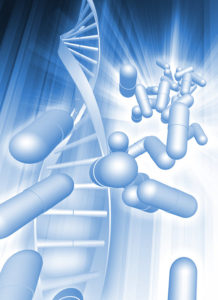 Under normal conditions, stem cells react to signals sent by your body, and regenerate damaged organs by producing new specific cells. Fatigue in stem cells is one of the main causes of poor regeneration. Resulting in degeneration in tissues, organs and the brain.
Under normal conditions, stem cells react to signals sent by your body, and regenerate damaged organs by producing new specific cells. Fatigue in stem cells is one of the main causes of poor regeneration. Resulting in degeneration in tissues, organs and the brain.
The research team set out to revitalize stem cells in the muscles of elderly mice. They gave nicotinamide riboside to 2-year-old mice (which is considered “old” for a mouse). Nicotinamide riboside is a precursor to NADH.
The results showed muscular regeneration was much better in mice that received nicotinamide riboside. They lived longer than the mice that didn’t get it.
Parallel studies have revealed a comparable effect on stem cells of the brain and skin. This work on the aging process has potential for treating diseases that can affect, and be fatal even in young people, with illnesses like muscular dystrophy.
No negative side effects were observed in any of the studies following use of nicotinamide riboside, or stabilized NADH. It appears to boost the functioning of all cells. Including cells that have been damaged.[ix]
NADH decreases anxiety
Studies show that NADH may be low in those suffering chronic fatigue syndrome (CFS). So researchers in Spain set out to evaluate the efficacy of supplementing NADH in those with CFS.
The research team recruited 86 CFS patients with a mean age of 47 years to take part in a 3-month double-blind, placebo-controlled trial. The patients were given 20 mg of NADH or a placebo for 2 months.
The team found that those using NADH experienced a significant decrease in anxiety symptoms. And maximum heart rate dropped.[x]
NADH reduces symptoms of Chronic Fatigue
Chronic Fatigue Syndrome (CFS) has baffled researchers and the medical community for years. Its cause is unknown, and it’s associated with a myriad of symptoms.
But the main common denominator in all Chronic Fatigue cases is severe fatigue. And no therapeutic regimen has proven effective for this condition.
In this study, 31 patients fulfilling the criteria for CFS were selected to participate. They were given NADH or other nutritional supplements for 24 months.
The 12 patients who received NADH had a dramatic and statistically significant reduction of chronic fatigue symptoms.[xi]
NADH Recommended Dosage
NADH is a coenzyme, antioxidant form of Vitamin B3 (niacin). It’s a naturally occurring enzyme found in all living cells. And necessary for cellular ATP synthesis and energy production.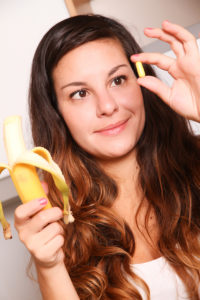
NADH is available in tablet form as 5, 10 and 20 mg tablets. It’s faster-acting if you can find sublingual tablets.
If you’re looking to boost dopamine, stack your NADH with L-Tyrosine. Because NADH converts tyrosine to dopamine.
NADH Side Effects
Your body naturally produces NADH. So it’s non-toxic and very well tolerated. NADH should not produce side effects.
Types of NADH to buy
NADH is highly unstable and for it to remain effective needs to be in a stabilized form.
Most neurohackers recommend the patented, stabilized form of NADH that’s made by a German company called ENADA. A couple of major supplement manufacturers license the ENADA brand of NADH. Check the label.
Another great option is Pure NADH which is 100 % vegan-friendly, lactose-free, Halal certified, manufactured under GMP, ISO 22000, HACCP standards, and 3rd party tested.
I use and recommend: Click for Pure NADH
Nootropics Expert Recommendation
NADH 10 mg per pay
 I recommend using NADH as a nootropic supplement.
I recommend using NADH as a nootropic supplement.
Your body does make some NADH on its own. And from eating meat, poultry and fish. But studies have shown we don’t get an adequate supply of NADH from food sources because most of it is lost in cooking.
NADH is particularly helpful for vegetarians because very little NADH is available from vegetables.
NADH is especially helpful for those suffering Chronic Fatigue Syndrome.
We suggest starting with a dose of 10 mg daily. And NADH is a great compliment to a stack with any nootropic. Do your best to find a stabilized form of NADH like the patented ENADA.
For a more effective dopamine boost, stack your NADH with L-Tyrosine. NADH converts tyrosine to dopamine.
You need to provide the mitochondria in your brain with the nutrients required to make ATP which is your main source of cellular energy. Or neurons start to break down from the inside. NADH carries the electrons needed for the synthesis of ATP. Signs that your lacking adequate NADH is brain fog, slow thinking, fatigue and low endurance.
Some clinics in the USA and other countries are using NADH or NAD+ therapy as a treatment for addiction, anxiety, depression, chronic stress and post-traumatic stress disorder (PTSD).
Intravenous (IV) NADH has been used effectively since the 1960’s for detoxing patients from alcohol, opiates, tranquilizers and stimulants.[xii]
I use and recommend: Click for Pure NADH

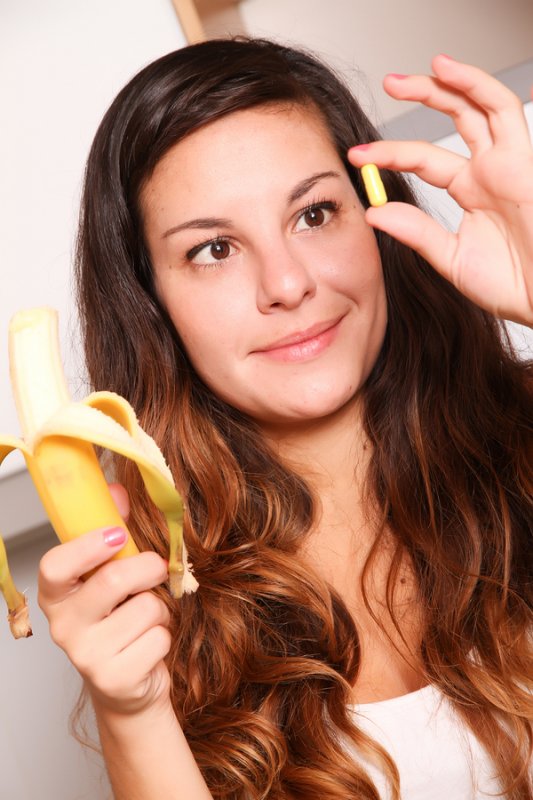
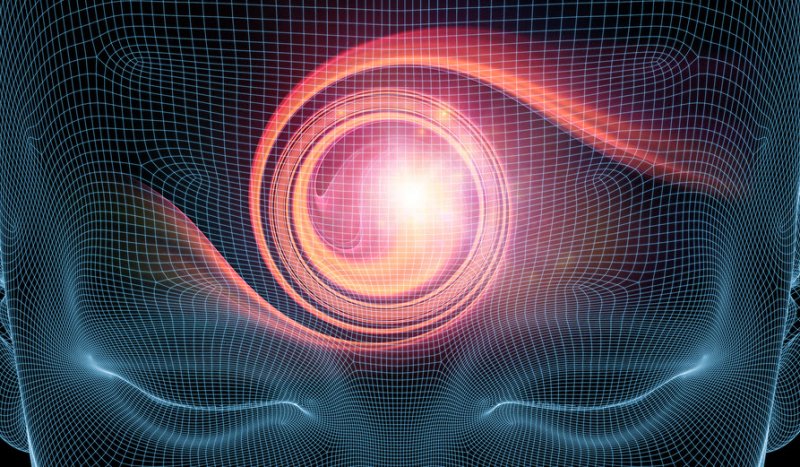






Join The Discussion - 110 comments
David
March 3, 2023
Hi david is it good to stack nadh with performance lab energy?
Also is it safe to take nadh+tyrosine with saffron?
David Tomen
March 4, 2023
David, yes you can use NADH, L-Tyrosine and Saffron. Just make sure you follow dosage recommendations.
Larry
August 23, 2022
Hello David, I recently went to a neurologist for parkinsons to be certified for benefits from various sources. I’ve had this dreadful disease for over a year and was treating it with tyrosine and nadh. Works great, but he insisted I take Sinemet and take no other supplement. This is my second day on Sinemet. It works but I feel lousy. Going to give it a few more days. My question is can I safely take nadh with Sinemet?
Thank you greatly David for your good work. The info for tyrosine and nadh came from you.
David Tomen
August 23, 2022
Larry, Sinemet is carbidopa-levodopa. Carbidopa is added to synthetic levodopa so it reduces the side effects associated with using just levodopa.
You can get natural levodopa by using L-DOPA extracted from Mucuna Pruriens. And it does not come with side effects. The only challenge is finding a Mucuna Pruriens extract of 95 or 99% L-DOPA). Like this one: https://geni.us/aHBpTM. Most other extracts are only 15 – 20% L-DOPA.
And yes, you can still use NADH with Sinemet or L-DOPA. Here is a list of drugs that you should avoid while using Sinemet: https://www.drugs.com/drug-interactions/carbidopa-levodopa,sinemet-index.html
Sindhu
August 16, 2022
Dear Tomen,
The term NAD+ and NADH is always used together. I understand that they both are oxidized and reduced form of NAD. My question is does NAD in its oxidized form (NAD+) has different functions? and in its reduced from (NADH) does it have different functions like those you mentioned abive in the article?
So supplementing precursors like Nicain, Nicotiamnide, NR, NMN will all get converted to NAD+/NADH and perform their respective functions?
How different is NAD+ and NADH in terms of their physiological role?
We always talk about NAD+ for sirtuin activation, restoring mitochondrial – nucleus communication. Does reduced from NADH also activate sirtuin?
David Tomen
August 16, 2022
Sindhu, it’s complicated. According this study (https://www.ncbi.nlm.nih.gov/pmc/articles/PMC5648639/) sirtuins sense NAD+ but not NADH or the NAD+/NADH ratio. NAD+ can help produce NADH. But this all happens without much intervention on our part other than making sure there is enough niacin available to the job.
NADH is the reduced form of NAD+ making NADH the “active” form which can donate electrons.
JOHN
August 19, 2022
Hi David,
will NADH once it has done its job in helping to convert glucose to ATP be changed into NAD+ so we dont need to supplement with NAD+ precursers?
David Tomen
August 21, 2022
John, NADH is the reduced form of NAD+ making NADH the “active” form which can donate electrons. If you are supplementing with NADH you should not need to supplement with NAD+ too.
Alice
July 20, 2022
Hello, I’ve been trying to find information on whether NADH combined with Vyvanse (or other ADHD stimulants) would carry a risk of serotonin syndrome? From what I understand, NADH could result in increased serotonin, and I know that the risk of serotonin syndrome is increased if taking Vyvanse and (for example) SSRIs at the same time, so I’m wondering if there could be a similar risk with NADH? (Btw, I am interested in the NADH for its potential to help my CFS moreso than my ADHD).
David Tomen
July 21, 2022
Alice, Serotonin Syndrome is mostly caused by combining two prescription drugs. You can do it by using St. John’s wort as well.
NADH is a natural coenzyme made by your body. Taking it as a supplement should not cause problems with any drug.
Dennis
June 29, 2022
Hello David, I’m recovering from a burn-out. My current stack is:
– Performance lab energy 2 or 4 capsules a day (for energy/fatigue issues)
– DHA/EPA
– Multivitamines
– L-Theanine 200 mg a day (promote relaxation, calmness, remove tension)
– D-Ribose 4 gr a day (for energy/fatigue issues)
I want to add NADH for energy/fatigue isssues and possibly NAC (maybe also L-acetyl- Glutathione) for antioxidant/energy functions. But they all also work on the neurotransmitters like L-Theanine also does. Is combining them too much?
Kind regards,
Dennis
David Tomen
July 1, 2022
Dennis, L-Theanine affects how GABA, serotonin and dopamine is used in your brain. NADH is involved in the production of some of these neurotransmitters. As are many of the components of your multivitamin. They all compliment each other.
The rest of your stack have entirely different functions. So, no it’s not “too much”.
Dennis
July 17, 2022
Thank you very much David. I’ve read your posts on L-Theanine and NADH before I asked my question but I couldn’t figure out if they where complimentary or doing the same and therefor too much. So thanks for your reply.
Steve
May 24, 2022
Hello David, Is it more effective to supplement with “NADH” instead of “nicotinamide riboside”? , or either of the two options is equally effective according to your experience?
And Do you recommend the use of agmatine sulfate? (And if not, why)
David Tomen
May 24, 2022
Steve, good question re. NADH. I would have said you need NADH but then COVID-19 happened. But autopsies found those with COVID were very deficient in NAD+. But when they tried supplementing with NAD+ in living COVID patients it did not work. The only way to increase NAD+ was by using plain niacin. Niacinamide did not work either.
So to answer your question I don’t know at this stage after seeing that evidence. There are applications where NADH is effective. But for the majority of us “normal” folk it look like niacin is best and let your system take care of the rest of the pathway when it needs it.
And I have not seen any evidence that agmatine sulfate is effective for anything. I think we have far better options for brain support than using something like agmatine.
Sue Xamilou
March 12, 2022
Hi David
Would there be a need to take and would it be ok to take NADH and short acting Ritalin ?
Also do you find any differences preferences of Ritalin/Adderall ?
David Tomen
March 13, 2022
Sue, yes you can use NADH and Ritalin.
I’ve found that some respond better to Ritalin and some need to use Adderall. Each of us is still unique in many ways even though we share this ‘condition’. For example, I cannot use Adderall. It does not work for me but Ritalin does. But I have met plenty of people who are the opposite.
Vgbo
October 29, 2021
Hello David, i was wondering if there is a natural way of converting niancin to nadh,like for example taking vit c,b3, copper,SELENIUM to help production of dopamine.
And in your article you wrote that I quote “Intravenous (IV) NADH has been used effectively since the 1960’s for detoxing patients from alcohol, opiates, tranquilizers and stimulants.[xii” my question is, how is this effective for detoxing and can it then decrease my vyvanse medication if taken together? Anyways, love your site and your active interaction with your readers.
David Tomen
October 30, 2021
Vgbo, scroll up to the section “How does NADH work in the brain?” and see #2 which explains how NADH is involved in the production of dopamine and norepinephrine. And how if anything it will support your use of Vyvanse.
NADH is the active coenzyme form of niacin. You cannot ‘force’ its natural production in every one of your cells. But you can take it as a NADH supplement or take niacin which is a precursor to nicotinamide adenine dinucleotide (NAD) which converts to NADH.
Vgbo
November 2, 2021
Thank you. Any reply on how NADH is used to detox pasients from different drugs?
Second question: is it possible to take a non sublingual supplement and make it so it can be taken sublingual? For example tyrosine, bvitamins etc
David Tomen
November 2, 2021
How the detox works is explained in this article near the end of the first page: https://www.thefix.com/content/brain-restoration-%E2%80%98too-good-be-true%E2%80%99-addiction. NADH enters the Citric Acid Cycle in mitochondria to help produce energy as ATP. This cellular energy increase contributes to helping the body detox.
Any supplement that is not offered with a sublingual option usually indicates there is no benefit to taking it sublingually. You experience the benefit of many nootropic supplements after they through your digestive system and are converted to a form your body can use. Or enter your system in a method your body and can use.